Hello, fellow dog lover! As a holistic veterinarian, I know how much you care about your furry friend’s health, especially when it comes to their eyes. That’s why I’m here to talk about Appenzeller Sennenhund Eye Health today. You see, this breed has a unique eye structure that makes them prone to certain eye conditions. But don’t worry, with the right knowledge and care, we can keep those peepers sparkling!
Appenzeller Sennenhunds are known for their lively, intelligent eyes. But these expressive orbs can also be susceptible to various eye diseases. This article will provide you with an in-depth understanding of the common eye issues in Appenzeller Sennenhunds and how to prevent them. We’ll also discuss the importance of a holistic diet rich in vitamins and antioxidants, and the role of environmental hygiene in maintaining your pup’s eye health.
Moreover, I’ll share some practical tips on routine Appenzeller Sennenhund eye care and maintenance, so you can ensure your fur baby’s eyes stay as bright and healthy as possible. So, let’s get started on this journey towards better eye health for your Appenzeller Sennenhund! Remember, when it comes to your dog’s health, knowledge is power, and prevention is key.
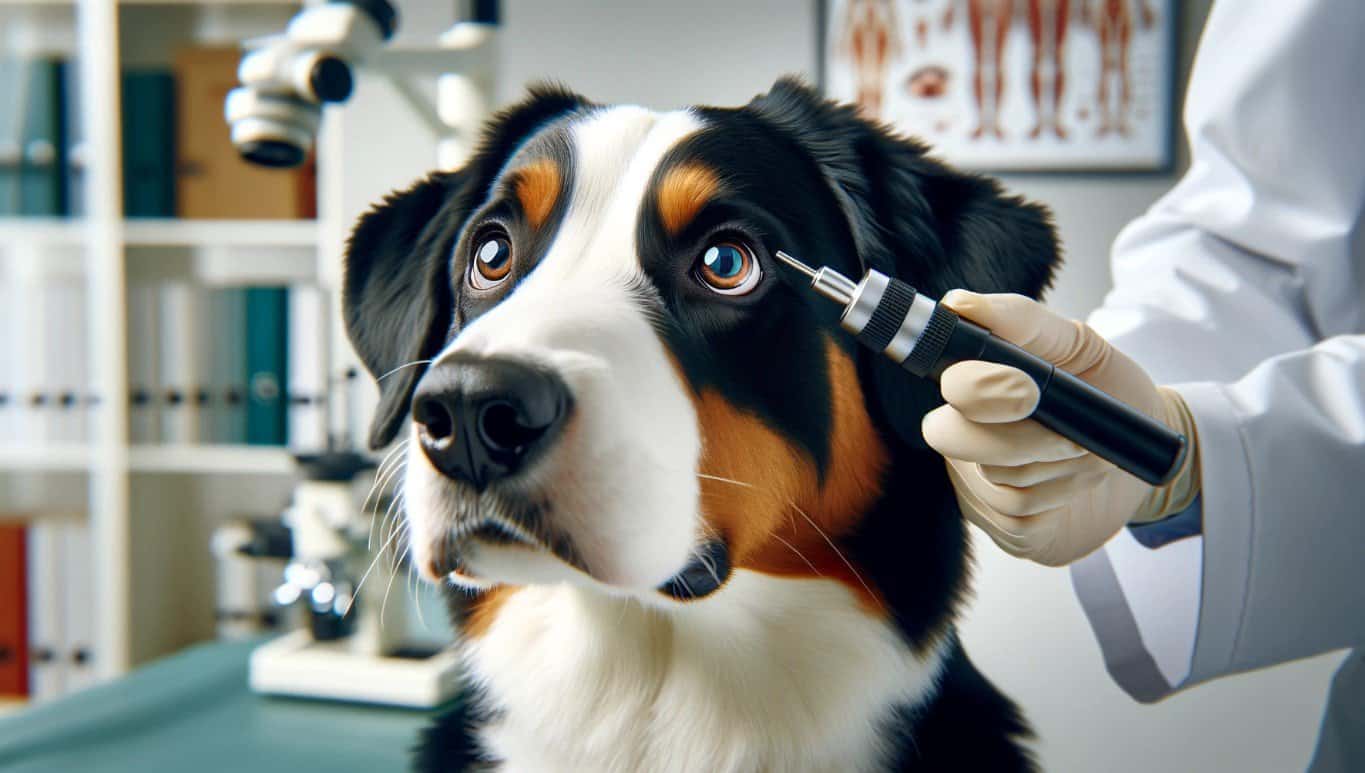
Understanding Appenzeller Sennenhund Specific Eye Structure
As a proud Appenzeller Sennenhund parent, you already know that your four-legged friend’s eyes are more than just a window to their soul. They are a significant part of their overall health and wellbeing. Understanding the specific eye structure of your Appenzeller Sennenhund can help you better care for them and even prevent potential eye health issues.
Appenzeller Sennenhunds, like other dog breeds, have unique eye structures that set them apart. Their eyes are typically almond-shaped, medium-sized, and come in a lovely shade of brown. They are set somewhat obliquely, giving them a distinct and expressive look.
The cornea, a clear outer layer at the front of the eye, is designed to allow light to pass through to the retina at the back of the eye. It’s also the first line of defense against foreign objects and injury. The lens, located behind the pupil, focuses light onto the retina where images are perceived.
The third eyelid or nictitating membrane, a feature common in many dog breeds including the Appenzeller Sennenhund, provides additional protection. It’s a thin tissue that sweeps across the cornea, removing debris and distributing tears evenly for lubrication.
The tear ducts located at the corner of the eyes play a crucial role in maintaining eye health by producing tears. These tears are essential for keeping the eyes moist, clean, and free from infections.
Understanding your Appenzeller Sennenhund’s eye structure is the first step towards proactive eye health care. It can help you identify any changes or abnormalities early on, allowing for timely treatment and prevention of potential vision loss. By gaining this knowledge, you’re not just becoming a more informed pet parent, but also a better guardian of your Appenzeller Sennenhund’s eye health.
Common Eye Issues In Appenzeller Sennenhund
As a veterinarian, I have encountered various eye health issues in Appenzeller Sennenhunds. These dogs, known for their agility and versatility, can unfortunately be prone to certain eye conditions. Understanding these issues can help you ensure your dog’s optimal eye health.
One of the most common eye problems in Appenzeller Sennenhunds is Progressive Retinal Atrophy (PRA). This is a group of genetic diseases that cause the retina’s gradual deterioration. Symptoms include night blindness and dilated pupils. PRA is unfortunately irreversible, but early detection can help manage the condition.
Another common eye condition is Entropion, where the eyelid rolls inward, causing the eyelashes to rub against the cornea. This can result in discomfort, tearing, and potential corneal damage. Surgery is usually required to correct this issue.
Cataracts, which cause cloudiness in the lens of the eye, are also seen in Appenzeller Sennenhunds. They can lead to decreased vision and eventually blindness if left untreated. Surgery is often recommended for cataracts, especially if they significantly impact the dog’s vision.
Other potential eye issues in this breed include dry eye (keratoconjunctivitis sicca), which is a condition where the eyes don’t produce enough tears, and corneal dystrophy, an inherited condition that affects the cornea’s clarity.
It’s crucial to remember that early detection and treatment of these conditions can significantly improve your dog’s quality of life. Regular check-ups and immediate consultation when you notice any changes in your Appenzeller Sennenhund’s eyes are essential.
Maintaining your Appenzeller Sennenhund eye health involves recognizing these conditions and seeking appropriate treatment. Remember, your dog’s eye health is crucial for their overall well-being and quality of life.
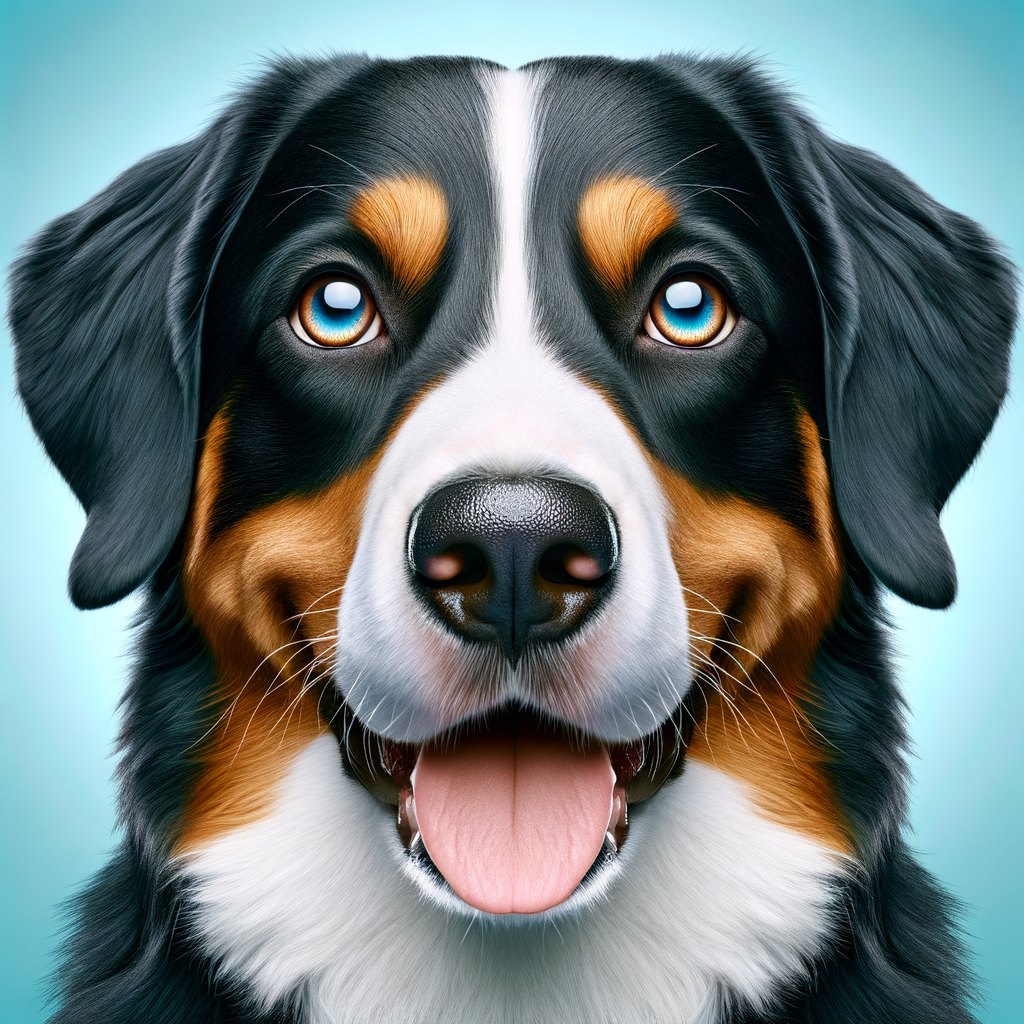
Prevention of Eye Problems in Appenzeller Sennenhund
Ensuring your Appenzeller Sennenhund gets the right nutrients for optimal eye health is essential for maintaining clear vision and preventing age-related issues. Natural, nutrient-rich foods and supplements can play a key role in supporting their eyesight. From vitamin A-packed freeze-dried liver treats to antioxidant-rich blueberries and targeted supplements like Eyeplex by Standard Process, there are several ways to nourish your dog’s eyes. In this section, we’ll explore how these powerful ingredients contribute to long-term vision health and overall well-being.
Eyeplex by Standard Process
Eyeplex by Standard Process is a specialized supplement designed to support your Appenzeller Sennenhund’s eye health with a blend of essential nutrients. Formulated with key vitamins, minerals, and antioxidants, Eyeplex helps protect against oxidative stress, supports retinal function, and promotes overall vision health. Ingredients like vitamin A, vitamin C, and zinc contribute to maintaining strong eyesight, while whole food ingredients provide additional phytonutrients for cellular protection. Adding Eyeplex to your Appenzeller Sennenhund’s diet can be especially beneficial for aging dogs or breeds prone to eye conditions, offering targeted nutritional support to keep their vision sharp and healthy for years to come.
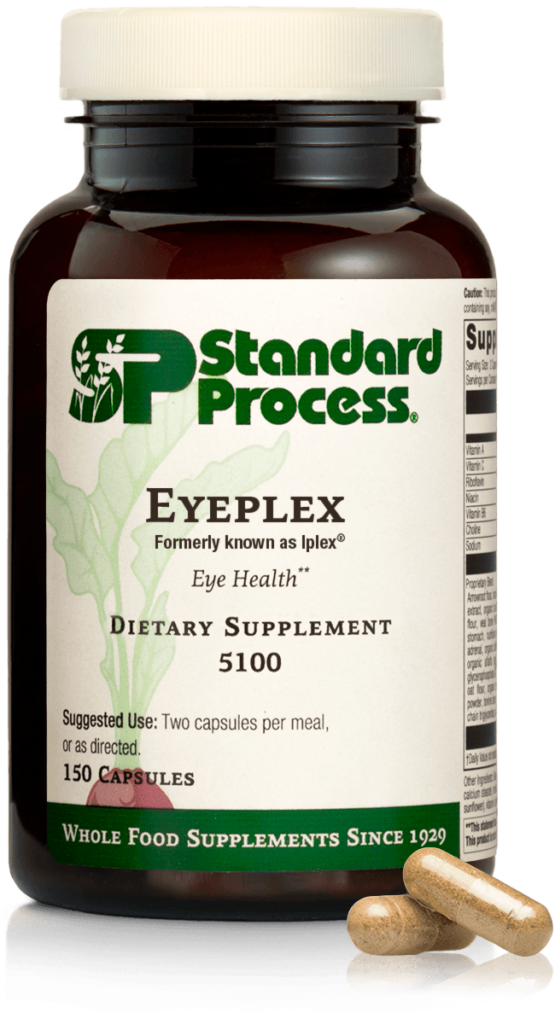
Freeze-Dried Blueberries
Freeze-dried blueberries are a powerhouse of antioxidants that can help protect your Appenzeller Sennenhund’s eyes from oxidative stress and age-related damage. Rich in vitamins C and E, as well as anthocyanins, these tiny but mighty berries help combat free radicals that can contribute to eye diseases like cataracts and macular degeneration. Incorporating freeze-dried blueberries into your dog’s diet provides a natural and delicious way to support retinal health, reduce inflammation, and promote overall vision longevity. Plus, they’re a low-calorie, dog-friendly treat that makes a great addition to a balanced diet for long-term eye health.
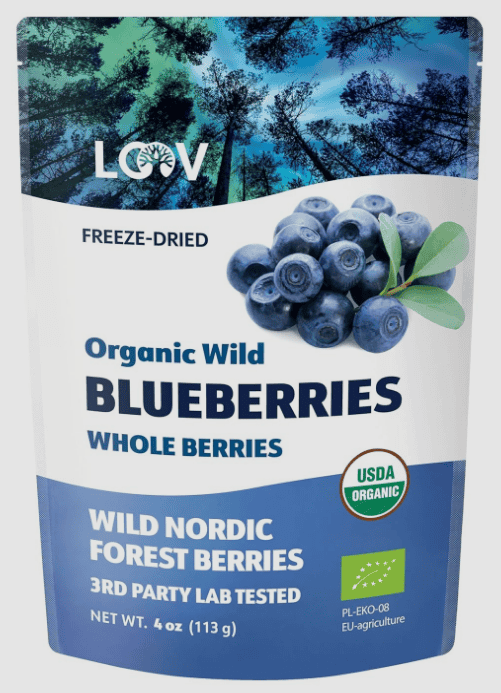
Freeze-Dried Liver
Freeze-dried liver treats are an excellent natural source of vitamin A, an essential nutrient for your Appenzeller Sennenhund’s eye health. Vitamin A plays a crucial role in maintaining good vision, especially in low-light conditions, while also supporting overall immune function and skin health. Since liver is rich in bioavailable vitamin A, incorporating freeze-dried liver treats into your dog’s diet provides a convenient and nutritious way to promote optimal eye function. Just be sure to feed them in moderation, as excessive vitamin A can lead to toxicity. Adding these nutrient-packed treats to your pup’s routine is a simple, tasty way to support their long-term vision and well-being!

By prioritizing your Appenzeller Sennenhund’s eye health through a balanced diet and nutritional supplements, you can help prevent many common eye issues. These simple steps can go a long way in ensuring your pup’s eyes stay healthy and clear for years to come.
Indoor Air Quality
Indoor air quality is a significant factor that can influence your Appenzeller Sennenhund’s eye health. Dust, dander, and other airborne particles can easily irritate your dog’s eyes, leading to discomfort and potential eye problems. Here are a few tips to improve indoor air quality:
- Regularly clean and vacuum your home to minimize dust and dander.
- Consider investing in an air purifier to filter out harmful particles.
- Ensure good ventilation in your home to avoid stagnant air.
Sprays, Diffusers, Candles, Incense
While sprays, diffusers, candles, and incense can make your home smell lovely, they can also introduce irritants into the air that can harm your Appenzeller Sennenhund’s eyes. The chemicals and fragrances in these products can cause eye irritation and even lead to more serious eye conditions. Here’s how to use these products safely:
- Choose pet-friendly products that are free of harmful chemicals.
- Use these products sparingly and in well-ventilated areas.
- Keep your dog out of the room while using these products and ensure the room is well-aired before allowing them back in.
Remember, the health of your Appenzeller Sennenhund’s eyes is not just about regular check-ups and a healthy diet. It’s also about creating a safe and clean environment where your dog can thrive. By paying attention to indoor air quality and being mindful of the products you use around your home, you can significantly reduce the risk of eye problems and keep your Appenzeller Sennenhund’s eyes healthy and bright.
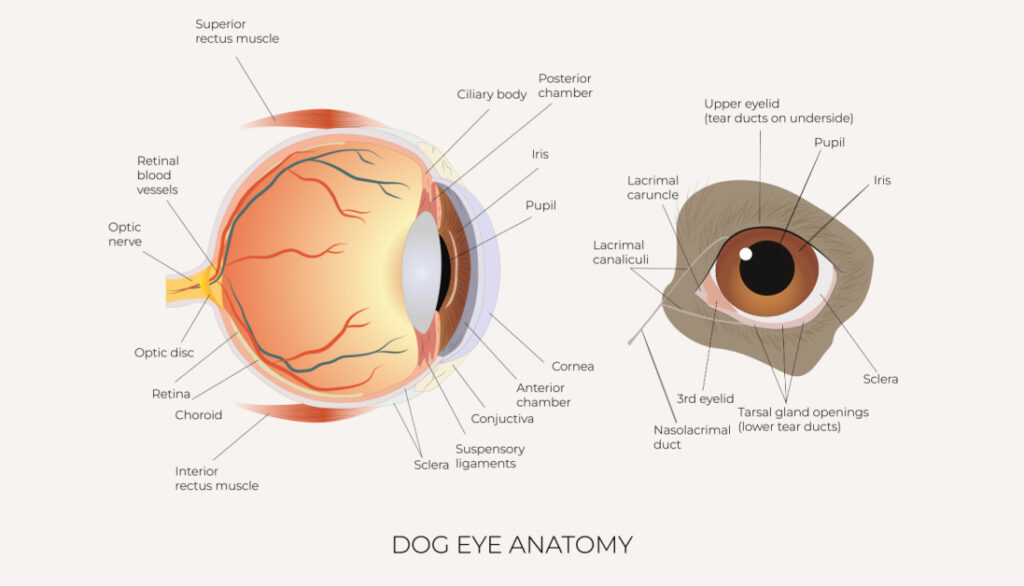
Routine Appenzeller Sennenhund Eye Care & Maintenance
As a proud parent of an Appenzeller Sennenhund, you know how important it is to keep your furry friend’s eyes healthy. The eyes are not just the window to the soul, but also a vital part of your dog’s overall health. So, let’s delve into the details of daily and weekly eye care and maintenance for your beloved companion.
Daily & Weekly Care & Maintenance
First off, a daily routine is essential for Appenzeller Sennenhund Eye Health. Start by visually inspecting your dog’s eyes. They should be clear and bright, and the area around the eyeball should be white. Look out for redness, swelling, or discharge – these could be signs of an eye condition.
Next, gently wipe away any crust or discharge from the corner of the eyes using a soft, damp cloth. Be sure to use a different part of the cloth for each eye to prevent spreading any potential infection.
Weekly, consider using a veterinarian-approved eye wash or tear stain remover to keep your dog’s eyes sparkling clean. Always remember that human eye care products are not suitable for dogs.
Monitor Hair Length, Nail Length, Bath Frequency
Besides daily and weekly care, there are other factors you should monitor for your Appenzeller Sennenhund’s eye health.
- Hair length: Long hair around your dog’s eyes can cause irritation and even lead to eye issues. Regularly trim the hair around the eyes to prevent this problem.
- Nail length: Overgrown nails can lead to accidental scratches and injuries to the eye. Keep your dog’s nails trimmed to a safe length.
- Bath frequency: Bathing your dog too often can dry out their skin and eyes. On the other hand, not bathing them enough can lead to a buildup of dirt and bacteria that could potentially infect the eyes. Find a balance that works for your dog, typically every 2-4 weeks.
Remember, Appenzeller Sennenhund Eye Health is a crucial aspect of your dog’s overall wellbeing. By following these tips for daily and weekly care, and by keeping an eye on factors like hair and nail length, you’ll be taking a big step towards keeping your four-legged friend’s eyes in top shape. Don’t forget, if you ever notice anything unusual about your dog’s eyes, always consult your vet right away.
Frequently Asked Questions
1. What are common eye health conditions in Appenzeller Sennenhunds? Common eye health conditions in Appenzeller Sennenhunds include cataracts, progressive retinal atrophy (PRA), and entropion.
2. How can I identify if my Appenzeller Sennenhund has an eye health problem? Watch out for symptoms such as redness, excessive tearing, cloudiness, squinting, or changes in vision. If you notice any of these signs, it’s best to consult a veterinarian.
3. Can Appenzeller Sennenhund eye health conditions be treated? Yes, many eye health conditions in Appenzeller Sennenhunds can be treated. The treatment options vary depending on the specific condition and its severity. It’s important to seek professional advice from a veterinarian.
4. How can I prevent eye health problems in my Appenzeller Sennenhund? Regular veterinary check-ups, proper nutrition, and maintaining good hygiene can help prevent some eye health problems. Additionally, avoiding excessive exposure to irritants and protecting your dog’s eyes from potential injuries can also reduce the risk of eye issues.
5. Are Appenzeller Sennenhunds prone to any hereditary eye diseases? Yes, Appenzeller Sennenhunds can be prone to hereditary eye diseases such as primary lens luxation (PLL) and multifocal retinal dysplasia (MRD). It is recommended to get your dog’s eyes tested by a veterinary ophthalmologist to identify any potential genetic issues.
